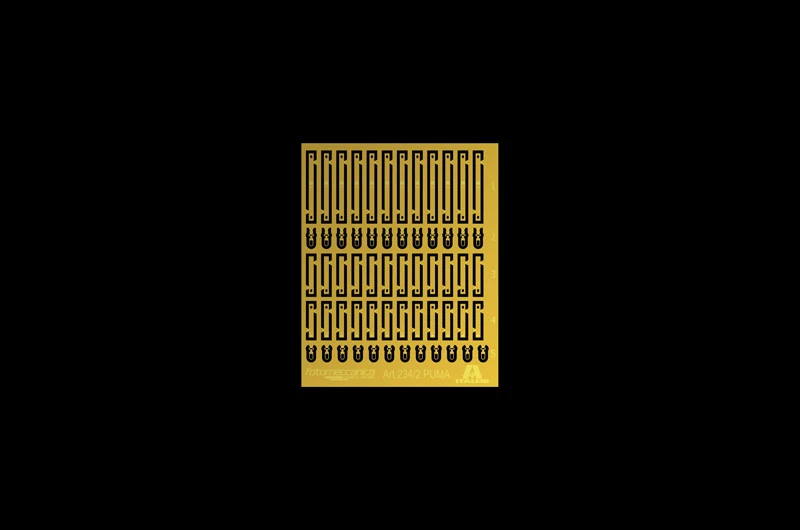Mercedes Benz G230 Feuerwehr
1/24th scale
Kit No #3663
Model Dim. 19,3 cm
Rubber Tyres
- Decal For 4 Versions
- Additional Equipment Parts
- Colored Instruction Sheet
The Mercedes-Benz G-Class (G denotes ‘Geländewagen’, or off-road vehicle) was developed by the German car manufacturer during the 1970’s and was developed through a partnership between Daimler-Benz and the Austrian Steyr-Daimler-Puch company. The ‘G’ series cars were immediately characterized by being extremely robust, reliable and with a very good off-road capability thanks to their lay-out and the 4x4 traction. The car has been continuously improved and developed and today it is the most long-lived model of the Mercedes Benz production line up. The decal sheet included.
The colour choices shown by Italeri
Masks are provided for the transparent parts of the kit
Over the years its key design features changed very little, thereby demonstrating the worth and validity of the original design concept. One of the most successful versions was the MB G230 that gained considerable commercial success in many countries. It was also the basis for special set-ups dedicated to specific use solutions such as that dedicated to the Fire Brigade.
Sd.Kfz. 234/2 Puma
Kit No #6572
1/35th scale
Model Dim. 19,4 cm
- New Wheel Rims
- Rubber Tyres
- Photo-etched Fret
- Colored Instruction Sheet
The German armored car ‘Schwerer Panzerspähwagen Sd.Kfz. 234/2’ known as "Puma", was developed and produced by the German war machine in the closing years of WW2. The vehicle proved to be an excellent mix of mobility, protection and firepower which was built upon the operational experience gained by the Wehrmacht in the early stages of the conflict. From 1939 onwards the German army had used armored vehicles very effectively for advanced reconnaissance tasks, and also in a ground support role for its troops. The “Puma” was initially a reconnaissance vehicle, but due to its KwK 39 L / 60 50 mm gun it could also be used equally effectively in offensive actions against infantry and other armored vehicles. It was deployed in limited numbers on both the Eastern and Western fronts. The highly effective independent suspension system of the eight wheels and the powerful engine, enabled the Puma to reach speeds of up to 90 km/h on all types of battlefield terrain.
MC.200 Saetta
Kit No #2815
48th scale
Model Dim. 17,0 cm
Super Decal Sheet For 4 Versions
Model Dim. 17,0 cm
Super Decal Sheet For 4 Versions
- Photo-etched Fret
- Colored Instruction Sheet
Designed by the celebre engineer Mario Castoldi, the Macchi MC 200 has represented a significant production evolution of the Italian fighter aircrafts. Compared to the biplanes Fiat CR 32 and Fiat CR 42 that were the main Italian fighters squadrons structure at the beginning of the Second World War, the Macchi MC 200 distinguished itself, together with its contemporary Fiat G50, for its monoplane configuration and for the entire metallic airframe structure. The 14 radial cylinder Fiat A.74 RC 38 double star engine was able to release 840 HP and allowing the Macchi Mc 200 to reach speeds of 500 Km/H.
In comparison with the Allied fighters, it resulted to be underpowered and, neither the less, a lower fire capacity. Two 12,7mm Breda-SAFAT machineguns mounted over the characteristic engine bulged nacelle, were the only onboard armament available. In the latest versions, two additional 7,7mm Breda-SAFAT machineguns were incorporated in the wings. It has been deployed by the Regia Aeronautica on the main Second World War fronts: Africa, Mediterranean Sea, Balkans and in Russia.
The Sprues of the kit
Photo-etched fret and transparent sprue included
M.T.M. Barchino with crew
Model Dim. 19,1 cm
1/35th scale
Kit No #5623
Contains 2 Crew Figures
- Photo-etched Fret
- Color Instructions Sheet
Following its operational successes during WW1, the Italian “Regia Marina” continued with further post- war developments into various underwater and surface assault vehicles. The Motoscafo da Turismo Modificato (M.T.M.) for example, was designed to ensure a covert and rapid approach to targets with a low risk of detection from enemy forces. Closing in on the target, the pilot then adjusted the rudder to maintain direction and propelled the fast small boat on a collision course to the target.
The pilot, positioned at the stern, jumped from the craft at a safe distance before the collision. The high explosive charge positioned in the bow of the Barchino detonated upon impact against the target. The most successful deployment of the ‘Barchino’ by the Italian Regio Marina, was the assault led by Luigi Faggioni on the Royal Navy heavy cruiser HMS York at Suda Bay, Crete in 1941.
The Sprues of the kit
Figures included in the kit
Photo-etched fret included
These new kits are now for sale from Italeri directly from their website or from their distributors worldwide.












































